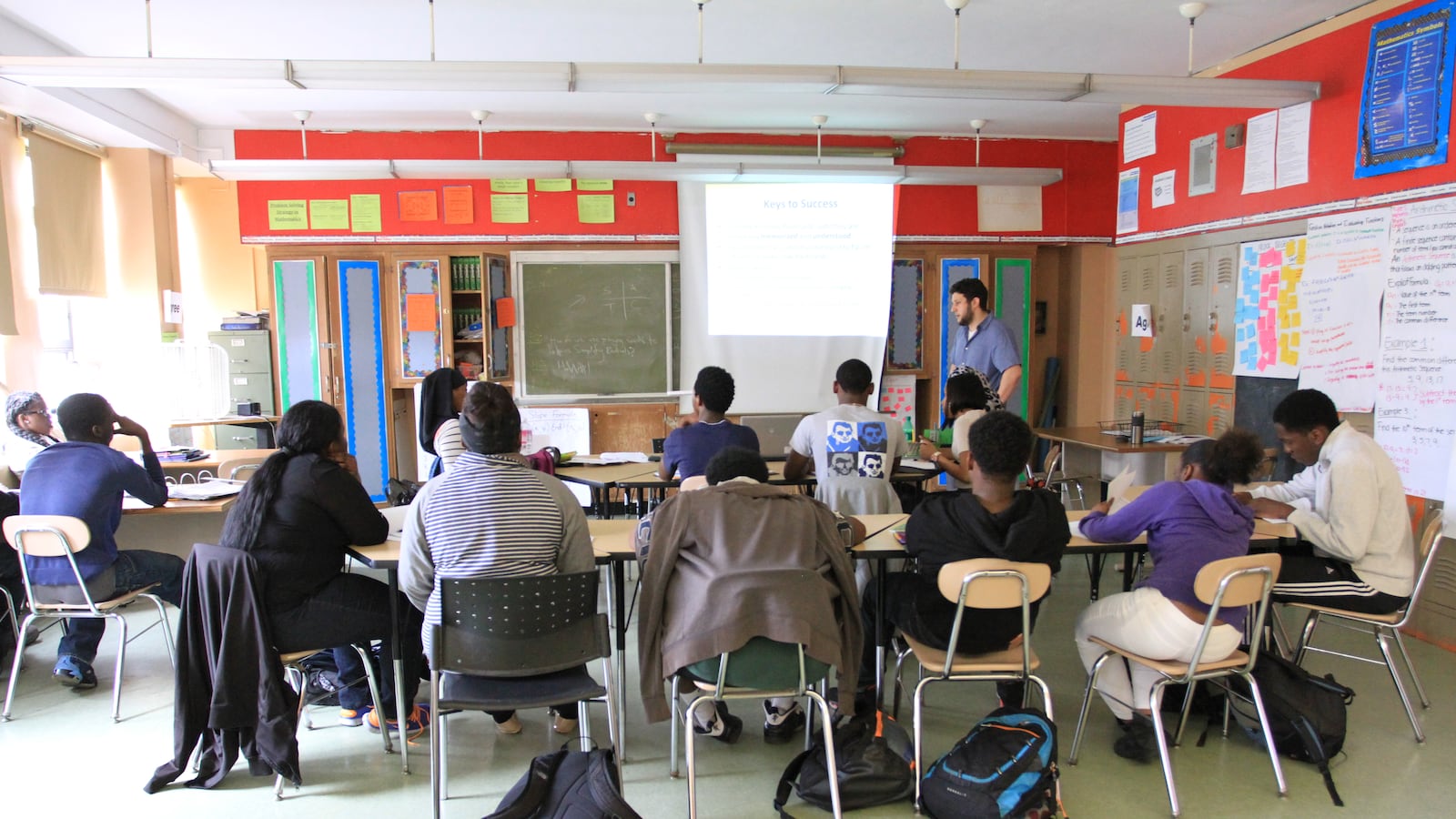Move over, teacher quality. A new study on New York City schools could make school climate the next frontier in the ongoing quest to boost student learning.
A first-of-its-kind study released Thursday found that significant gains in key measures of a school’s climate, like safety and academic expectations, can be linked to the equivalent of an extra month and a half of math instruction and, in some cases, a 25 percent reduction in teacher turnover.
The researchers say these findings could help shift the debate about what factors are most important in boosting student achievement. Individual teacher effectiveness may be key, but if a school simply has an ineffective principal or unclear disciplinary code, the authors argue, “efforts to measure and strengthen individual teacher effectiveness are unlikely to produce desired results.”
“The status quo has really focused on policies directed at individual teachers,” explains Matthew Kraft, an economics and education professor at Brown University and lead author of the study. But “teachers do not work in a vacuum.”
The report, which comes from NYU’s Research Alliance for New York City Schools, might seem so self-evident that they’re hardly worth studying. After all, why wouldn’t a better learning environment boost student achievement and make teachers more likely to stay in their jobs?
But Kraft said that measuring school climate is notoriously difficult, and no other study has looked at the effects of in school climate and student achievement over time. “We may have known that,” Kraft says, referring to the connection between school climate and student outcomes, “but whether we’ve been able to provide evidence that policymakers find relevant and convincing has been unclear.”
To find that relevant data, the researchers tapped into annual surveys collected by the city education department across 278 New York middle schools, which specifically ask teachers about their school’s climate. They zoomed in on middle schools because they tend to have challenging school climates and serve students at a crucial moment in their social and academic development.
Based on 31,000 responses to teacher surveys between 2008 and 2012, the authors honed in on four measures of school climate: school safety and order, leadership and professional development, high academic expectations, and teacher relationships and collaboration. The study tracked those indicators of school climate over time and compared them with student test scores and school data on teacher retention.
Each measure, the report found, is independently linked to decreases in teacher turnover. And gains on two of those measures, high academic expectations and school safety, were directly connected to better scores on state math exams.
The study found that if a school improved from the 50th percentile across the study’s four measures of school climate (leadership, expectations, relationships, and safety) to the 84th percentile, teacher turnover would decline by 25 percent, or 3.8 percentage points.
A similar percentile increase in measures of school safety and high academic expectations alone boosted math scores enough to account for an extra month and a half of instruction. (Improvements in school climate also boosted language arts scores on state tests, but those gains weren’t statistically significant.)
Kraft acknowledged that these findings show that schools would need fairly large improvements across multiple measures of school climate before seeing even modest returns on student achievement and teacher retention. But that shouldn’t discount the potential benefits of focusing on learning environments.
“Moving the needle on student achievement at scale is a very difficult thing to do,” he said. “What we’ve shown here is a potential avenue where that sustained investment [in school climate] is likely to pay off.”
These data may provide some support for schools Chancellor Carmen Fariña’s emphasis on cross-school collaboration and support for teachers over strict accountability.
For its part, the education department wrote that the findings are “exciting” and “demonstrate that school climate and capacity building, as measured by the survey, provide crucial feedback that helps drive school improvement and are closely linked with important outcomes.” The department added that 160 schools are participating in programs designed to promote best practices, including some that focus on school culture – and there are plans to expand them.
Nick Lawrence says he’s seen the benefits of paying attention to school climate firsthand. A middle school teacher who is part of East Bronx Academy for the Future’s administrative team, Lawrence says teacher retention and certain test scores have improved since the school started encouraging one-on-one coaching for every teacher, and offered opportunities for them take leadership positions.
“The teachers are more experienced, they’re more experienced with our particular population, [and] the curriculum gets stronger each year,” he said. “Our retention of teachers has gone through the roof compared with prior years.”
The study concludes that more research is needed to specify exactly how schools should try to improve their respective climates, but it does hint at the possibility that school climate data could be used to assess principal or school performance. “I think there’s a lot of potential for infusing the school improvement and personnel evaluation process with information on school climate,” Kraft said.
But some educators cautioned against that approach, arguing that one need look no further than standardized testing culture to see how it might go awry.
Using school climate data as an assessment tool, “would [create] pressure to boost their survey results in weird ways,” said Megan Moskop, a teacher at M.S. 324 in Washington Heights. “In trying to meet whatever quantitative mark, the quality often gets lost.”
Generally speaking, though, Moskop was thrilled with the study’s findings. “School climate is not one of those things that’s easy to measure … so it goes ignored,” she added. “I’m delighted to see this empirical support for something I think me and my fellow teachers have always known.”
Want more New York City education news? Sign up for Chalkbeat’s morning newsletter.

